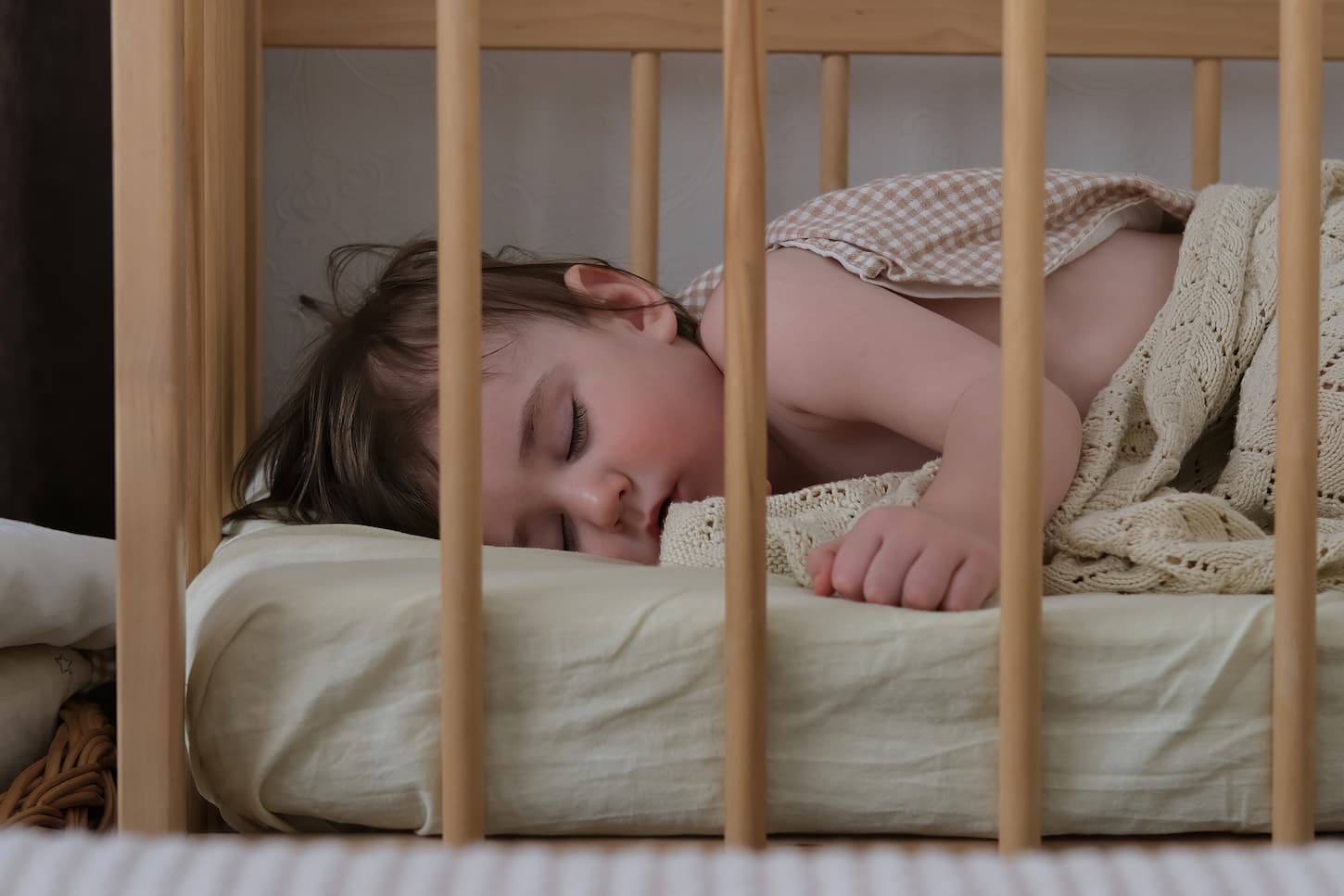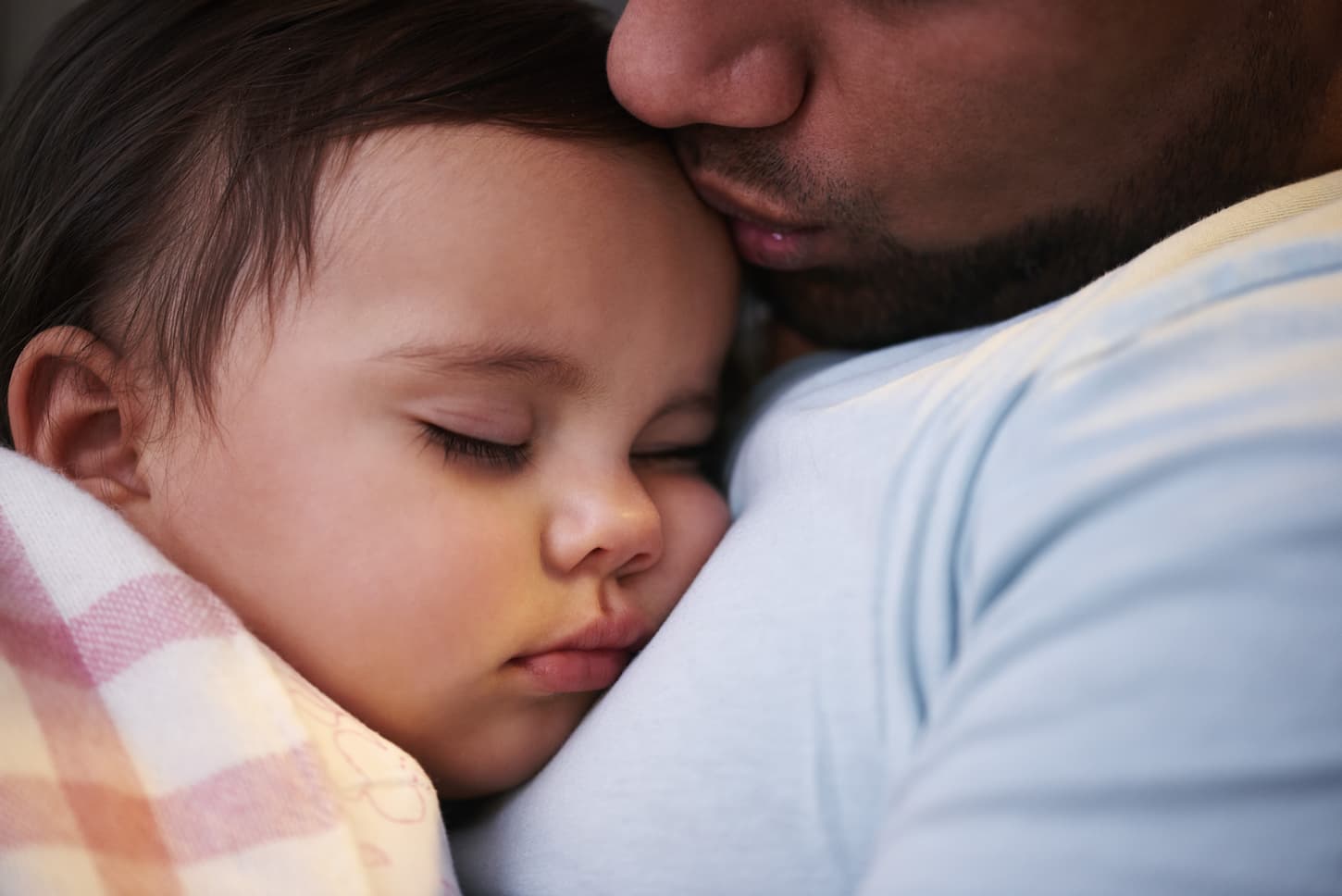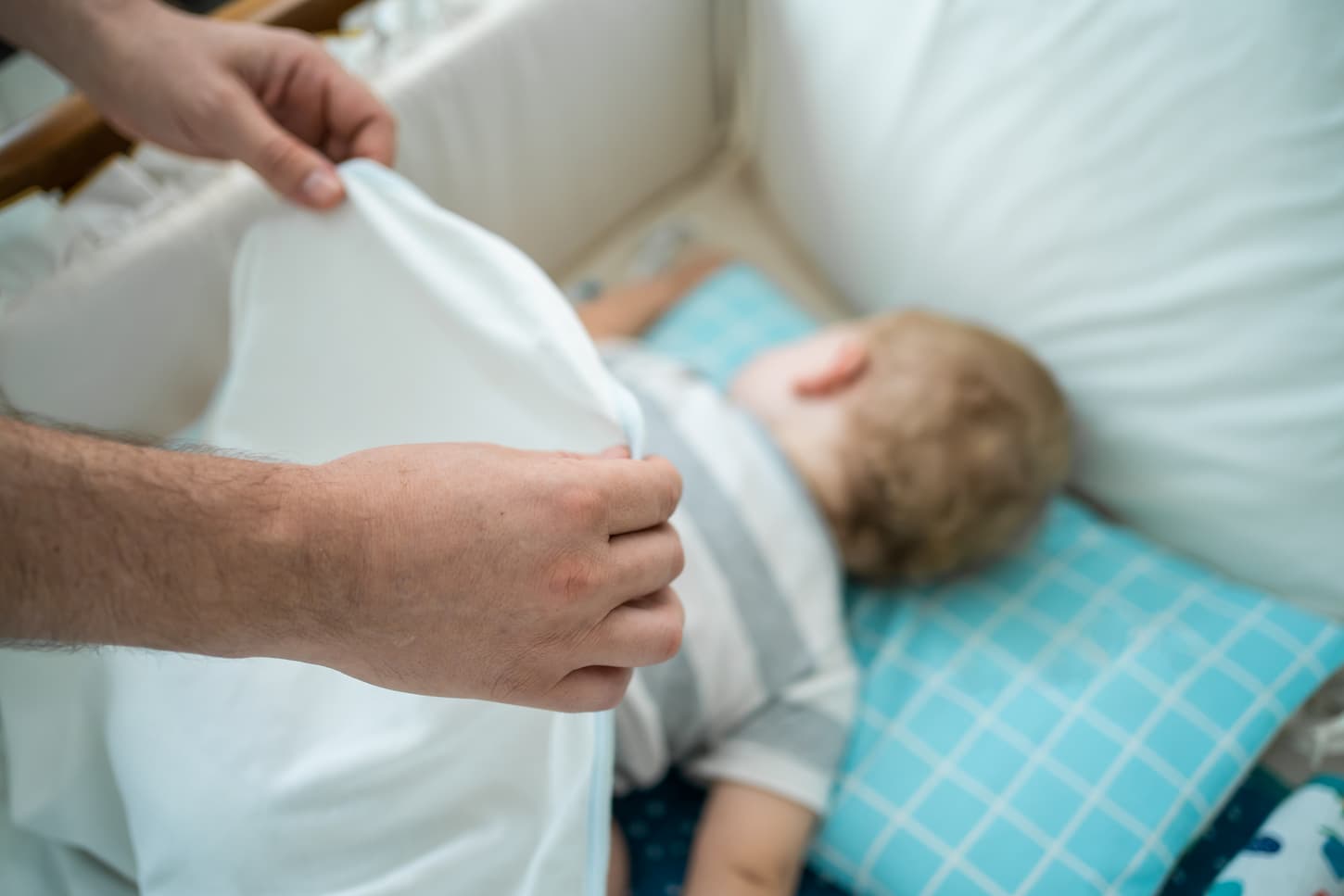We all need sleep, especially babies and children. However, some babies struggle with falling asleep. For new parents, this can be challenging – but we are here to ensure that there are no worries. So, can sleep training harm a baby?
When done correctly, sleep training will not harm a baby. Most babies eat and then fall asleep quickly; other babies need a little extra encouragement. However, it is an excellent method to try so the baby and parents can get a good night’s sleep.
It’s important to understand that each baby is different. Some babies are resilient, and some are sensitive. Other babies prefer spending time alone or may prefer more attention from their parents. The same goes for sleep.
So, get comfortable and get ready to learn what science and facts have to say about sleep training! We’ve got some good stuff here.

Does Sleep Training Damage a Baby?
A few studies have shown that sleep training does not damage or hurt a baby. The scientists who conducted research could not find the difference between the babies who were sleep trained and those who were not.
Here is a significant piece of information to address. Sleep training is safe for a baby if the parents do it correctly.
Before we get deep into the subject, it’s necessary to understand that parents don’t have to sleep train their babies if they don’t want to. It’s also OK to go ahead and sleep train a baby.
Always talk to a pediatrician before sleep training a baby. If the pediatrician gives the green light and instructions on how to do it, then go for it!
Are you researching whether sleep training is suitable for you and your baby? This article we wrote may be of help: Did Sleep Training Work for You? 3,800 Parents Surveyed.
How to sleep train a baby safely
As parents, we want our babies to grow and to feel secure and safe. So, we love our babies; we play with them and feed them.
That is why the bond between a parent and a baby is so strong and unique. Sleep is also essential in creating that special bond with a child.
A good night’s sleep gives a baby enough energy for the day. So, here are some tips on how to safely approach sleep training.
- Be nurturing and kind, don’t ignore or neglect your baby.
- Feed the baby healthy foods.
- Place the baby into the crib if they depend too much on you when falling asleep. This way, the baby will learn that a crib is a place for sleeping.
- Always follow the pediatrician’s instructions.
- Don’t set unrealistic goals, don’t be too extreme. Every baby is different. Try to be flexible and not be too hard on yourself or the baby.
- Some days will be more challenging than others. We won’t get it right every evening, and that is fine. Just remember that perfection doesn’t exist.
- Listen to the baby when they are crying. There will be some different patterns in the intensity and the pitch. That way, we can predict what our babies want or need. For example, sometimes, a baby wants to cuddle.

Does Sleep Training Damage Attachment?
None of the research has shown that sleep training damages the attachment between parents and their babies. A study published shows that sleep training has no adverse effects on parent-baby attachment.
Most parents worry that sleep training will affect the bond and attachment with their baby. For parents, attachment is a high priority, of course.
We understand the concern because we have been in those shoes. But what if we proved that we could have a relationship with our babies and still sleep?
If your baby crying too much is a concern, try using the advice in this article: No-Cry Sleep Training (a Complete Beginner’s Guide).
What is attachment? (A brief introduction)
Attachment creates an emotional relationship and bond with another person – this is also a parenting style. Parents want a close relationship with their babies. They accomplish this by feeding on demand and physically contacting their infant.
Attachment theory has been studied since the 1950s, and we know more than ever about it thanks to various studies. If you want a more thorough beginner’s introduction to attachment theory, Wikipedia has a pretty decent history of the theory, along with links to more recent studies. You can read it at this link here.
In any case, it’s a great way to explain bonding between children and parents. That being said, there are negative attachment styles (anxious, dismissive, and fearful) and positive (secure) ways for attachments to happen.
The goal is always to create a positive, secure attachment style with our children. So let’s discuss how to make that happen.
How to create and maintain a secure attachment style with a baby during sleep training
A secure attachment provides security, safety, and emotional balance for a baby. What does this mean in terms of sleep training?
Well, the baby can be separated temporarily from the parent. Then, when the baby is reunited with them, they feel happiness and comfort regardless of if they were upset about the separation.
This is valuable information. A baby will be comforted once reunited with its parents. What matters when sleep training is to respond sensitively and appropriately to the baby.
Here is another set of tips on how to maintain a secure attachment with a baby during sleep training:
- Communication is vital – if a baby is older, talk with them. Explain the sleep rules. If they are toddlers, the same rules apply.
- Find the best way to communicate with the child. This will tremendously help a baby to feel safe and loved.
- Additional comfort may be needed while sleep training, especially in the beginning. Offer extra cuddling and comfort in this period of adjustment.
- Consistency is a necessary factor. Don’t give up too soon. This is a game of patience for the parents and the baby.
- Don’t forget to sleep. A well-rested parent creates a bond with the baby and can meet the baby’s needs.
- Don’t forget – you are doing a fantastic job!
Why Should You Not Sleep Train Your Baby?
Parents should not sleep train their babies if they don’t need or want to. They should never try to sleep train before babies are four months old – their circadian rhythm needs time to develop. It’s also best to wait until the baby can go a while between mealtimes.
Parents do not have to sleep train their babies. Some babies don’t need it; they sleep fine. Give a newborn time to adjust and find their own pace of falling asleep. A baby will grow and develop ideally without sleep training.
If a baby has trouble sleeping, sleep training will speed up the entire process, which would happen anyway. But unfortunately, parents more than likely won’t have that much time because they are chronically sleep-deprived.
Some parents aren’t aware that they are sleep training their baby. But, who knows, maybe they are doing it intuitively.
Of course, babies can sleep without training. Sleeping is not something we have to learn; it comes naturally because we need sleep to live and function.
Eventually, babies find a way to fall asleep with or without our help. Sleep training transitions smoothly from grumpy do-not-want-to-fall-asleep-baby to a joyful and well-rested baby.
Remember, sleep training isn’t a necessity for every baby. Leave them be if they can settle into a restful and natural routine alone.
Is It Okay to Let a Baby Cry During Sleep Training?
Letting a baby cry during cry-it-out (CIO) sleep training is okay. Parents do not have to respond to every cry their baby makes. However, if the baby’s crying is stressful, know this is not the only method available. The Ferber method or no-tears methods may be a viable alternative.
But, we must respond if our babies need feeding or a dirty diaper change; neglecting our babies isn’t an option.
For example, the name of the popular sleep training method says it all: the Cry-it-Out Method (also abbreviated as CIO). CIO uses planned intervals of the baby’s crying. CIO is an effective and quick method but unsuitable for every baby.
Want to understand CIO? Here’s our guide: Cry it Out Sleep Training: a Complete Guide with Q&A.
It all depends on what sleep training method we choose for our babies. Today there are no-cry sleep training methods that we can try. Whatever method we try, follow the rules; as always, check the method first with the baby’s pediatrician.
As said before, some babies are resilient, and some are sensitive, so make sure you choose the correct method for your baby.

Key Takeaways and Next Steps
We have learned that sleep training cannot harm a baby if we do it appropriately and safely. We can sleep train and, at the same time, create a loving relationship with our little ones.
Finding the appropriate sleep training method will change parents’ and their babies’ sleeping patterns for good.
Remember to be patient and to give yourself and your baby time to adjust. But, of course, parents also need to sleep as much as the baby does.
As parents, we want to ensure that we have all the information we need, so we have listed some additional articles that we wrote on sleep training here:
- Does Sleep Training Change A Baby’s Demeanor?
- The Beginner’s Guide to the Ferber Method of Sleep Training
- No-Cry Sleep Training (a Complete Beginner’s Guide)
Or feel free to use the search bar (it’s up at the top of the page by the menu) to find what you need. If we don’t have a resource for you yet, use our contact page to email us so we can get your questions answered – and get a resource on this site.
Resources
Learning about parenting or sleep training techniques is important to learn from various reputable sources. These are the sources used in this article and our research to be more informed as parents.
- Attachment theory. (2022, September 5). Wikipedia. Retrieved September 20, 2022, from https://en.wikipedia.org/wiki/Attachment_theory
- “How Long To Let Baby Cry Before Picking Them Up?” Sleep Training Kids, 16 Apr. 2022, sleeptrainingkids.com/how-long-to-let-baby-cry-before-picking-them-up.
- “Is Sleep Training Good for Your Baby? What You Need to Know.” Sleep Training Kids, 16 Jan. 2022, sleeptrainingkids.com/is-sleep-training-good-for-your-baby-what-you-need-to-know.
- Ruggeri, Amanda. “What Really Happens When Babies Are Left to Cry It Out?” BBC Future, www.bbc.com/future/article/20220322-how-sleep-training-affects-babies. Accessed 12 July 2022.
- “Sleep Training Basics.” Sleep Training Kids, 27 June 2022, sleeptrainingkids.com/category/sleep-training-basics.
- “Sleep Training: Safe and Okay OR Cruel and Traumatizing?” Sleep Training Kids, 16 Jan. 2022, sleeptrainingkids.com/sleep-training-safe-and-okay-or-cruel-and-traumatizing.
- “Sleep Training Truths.” NPR, 15 July 2019, choice.npr.org/index.html?origin=https://www.npr.org/sections/health-shots/2019/07/15/730339536/sleep-training-truths-what-science-can-and-can’t-tell-us-about-crying-it-out?t=1657631294366.
- Webb, Meredith. “Science Says: Will Sleep Training Harm My Baby?” Family Sleep Institute, 1 Sept. 2021, familysleepinstitute.com/2021/09/08/science-says-will-sleep-training-harm-my-baby.
- “What If I Don’t Sleep Train My Baby?” Sleep Training Kids, 16 Jan. 2022, sleeptrainingkids.com/what-if-i-dont-sleep-train-my-baby.
- “Will Sleep Training Harm My Baby’s Emotional Health?” Kid Spot, Jane Barry, 26 Apr. 2021, www.kidspot.com.au/baby/baby-care/will-sleep-training-harm-my-babys-emotional-health/news-story/eb1c3dc8c4208dba37d9a97db1724f09.